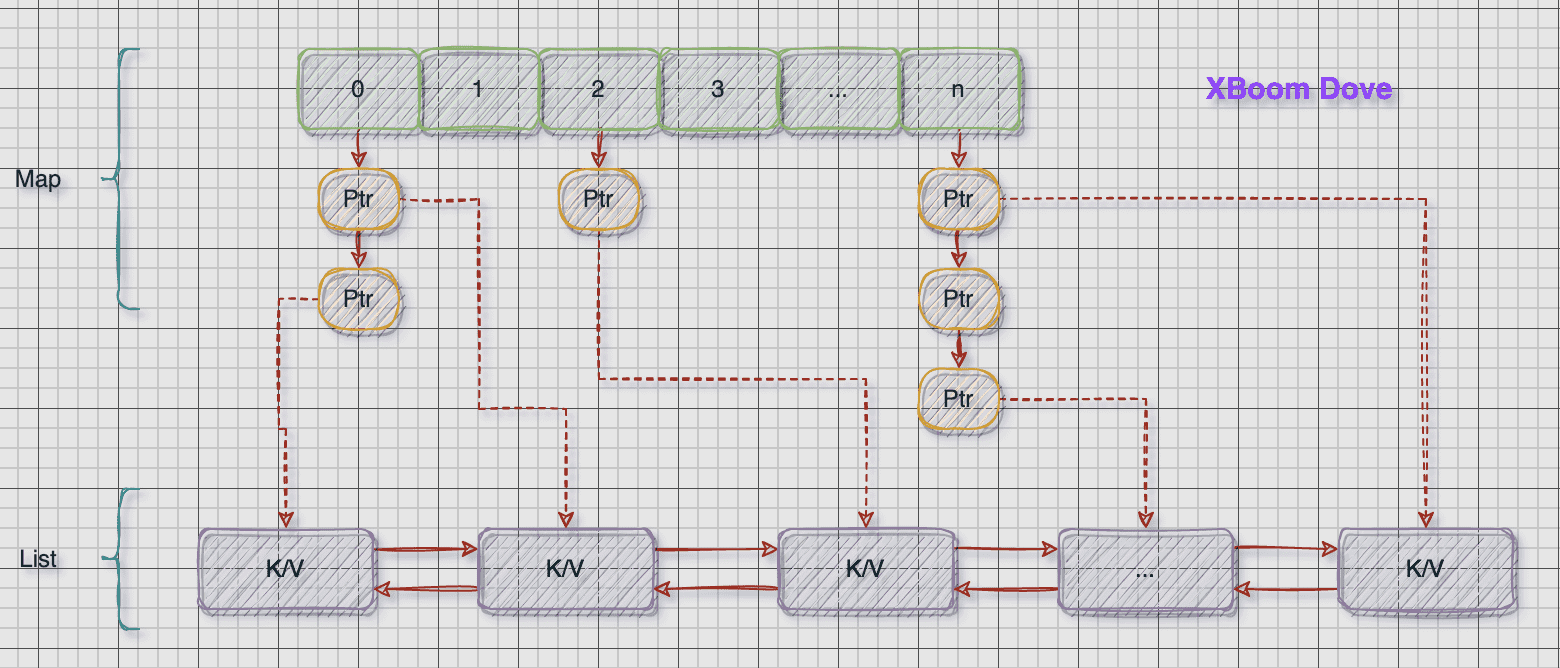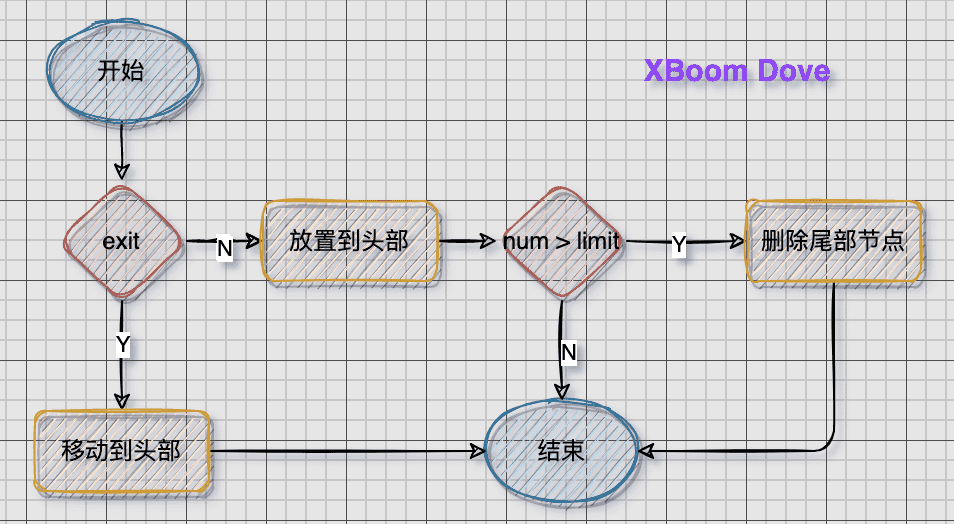问题背景
LRU(Least Recently Used),最近最少使用。根据时间维度来选择将要淘汰的元素,即删除掉最长时间没被访问的元素。
实现一个LRU算法需要解决的问题:
- 一个存储最近使用元素的结构,能够快速定位到元素(map)
- 如何计算元素被最少使用了,当添加或更新元素的时候方便查询最少使用元素(双向链表)
- 最近最少使用存在数量上限。(容量capacity)
实现原理
- 双向链表按照被使用的顺序存储了这些键值对,靠近头部的键值对是最近使用的,而靠近尾部的键值对是最久未使用的。
- 哈希表即为普通的哈希映射(HashMap),通过缓存数据的键映射到其在双向链表中的位置

删除节点

删除的时候链表和map中的都需要删除
新增节点

注意:
list节点中也要存储Map的key
技术内幕
代码路径:core/collection/cache.go
对象定义
1
2
3
4
5
6
7
8
9
10
11
12
13
| lru interface {
add(key string)
remove(key string)
}
emptyLru struct{}
keyLru struct {
limit int
evicts *list.List
elements map[string]*list.Element
onEvict func(key string) //自定义触发函数
}
|
删除元素
1
2
3
4
5
6
7
8
9
10
11
12
13
14
15
16
17
18
19
| func (klru *keyLru) remove(key string) {
if elem, ok := klru.elements[key]; ok {
klru.removeElement(elem)
}
}
func (klru *keyLru) removeOldest() {
elem := klru.evicts.Back()
if elem != nil {
klru.removeElement(elem)
}
}
func (klru *keyLru) removeElement(e *list.Element) {
klru.evicts.Remove(e)
key := e.Value.(string)
delete(klru.elements, key)
klru.onEvict(key)
}
|
添加元素
1
2
3
4
5
6
7
8
9
10
11
12
13
14
15
| func (klru *keyLru) add(key string) {
if elem, ok := klru.elements[key]; ok {
klru.evicts.MoveToFront(elem)
return
}
elem := klru.evicts.PushFront(key)
klru.elements[key] = elem
if klru.evicts.Len() > klru.limit {
klru.removeOldest()
}
}
|
参考链接
- https://talkgo.org/t/topic/2280


